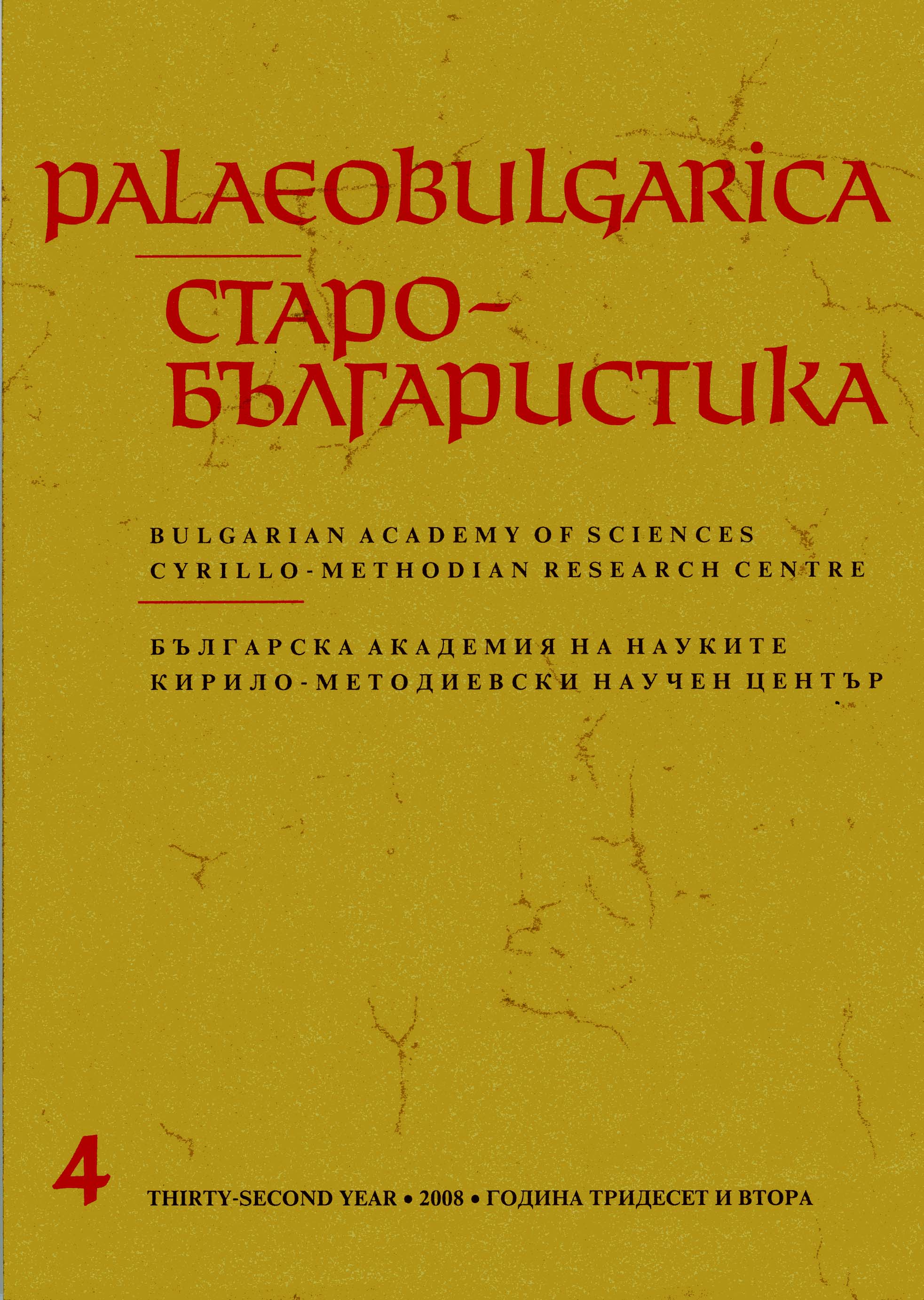Славянският Псевдозонар
The Slavonic Pseudo-Zonar
Author(s): Mariyana Tsibranska-KostovaSubject(s): Language and Literature Studies
Published by: Кирило-Методиевски научен център при Българска академия на науките
Summary/Abstract: The first part of this article concentrates on the history of the term “Pseudo-Zonar” and on another one it derives from – Zonara, Zonar, used both by medieval scribes and contemporary Slavonic scholars. In the middle of the 13th century, the name “Zonara” was given to the Bulgarian redaction of the Kormchaja of 14 titles with interpretations by South Slavonic men of letters, as attested by the famous Letter of the independent despot of northwestern Bulgaria Yacob Svetoslav, a man of Russian descent, to the Kievan metropolitan Kirill, and by the Note of the scribe Yoan Dragoslav. “Pseudo-Zonaras” (PsZ) is a term proposed by A. S. Pavlov to designate the Slavonic translation of a twelfth-century Byzantine text, Cotelerius nomocanon, evoking the name of the French editor Jean-Baptiste Cotelier (1677). It represents an anonymous penitential of provincial South-Italian, Italo-Greek origin quite exotic in terms of judicial matters, composed on the basis of acknowledged Canon law sources, but with tangible traces of the local secular tradition, namely the Procheiron Legum, the Ecloga ad Procheiron Mutata, the Novels of the Norman king of Sicily, Calabria and Apulea Roger II (1130–1154), the Lombard law. In the Russian manuscript tradition Pseudo-Zonar is also called Zonar, or Zinar, which creates ambiguity in the correct identification of its representatives. In the second part of the article a comparison of some of the earliest Bulgarian copies of PsZ from 14th–15th cc. with Cotelier’s edition is undertaken. The comparison allows for the conclusion that the terms “Pseudo-Zonar” nomocanon” and “Cotelerius’ nomocanon” are not synonymous. Rather, translated sections of the second are part of the core structure of a Canon Law miscellany with presumed Bulgarian origin, created in the 13th or the very beginning of the 14th cc.
Journal: PALAEOBULGARICA / СТАРОБЪЛГАРИСТИКА
- Issue Year: 2008
- Issue No: 4
- Page Range: 25-52
- Page Count: 28
- Language: Bulgarian
- Content File-PDF

